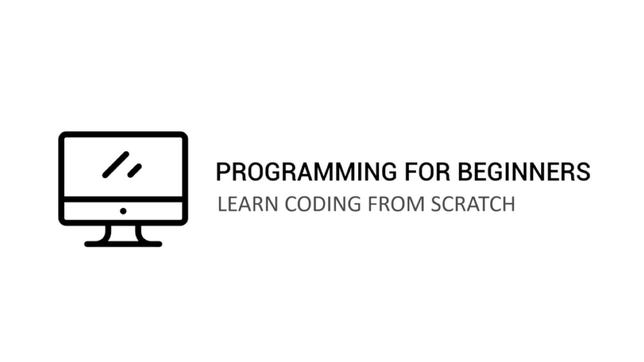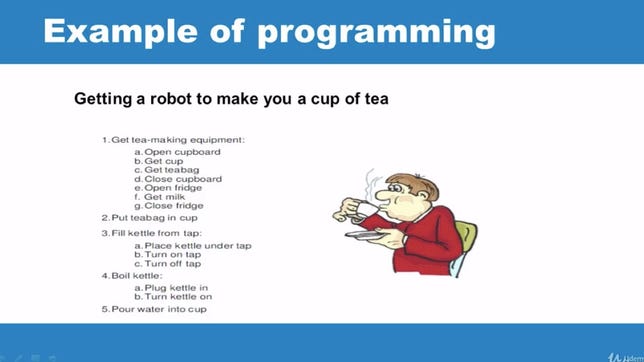Technologies
Learn to Code With These 5 Online Coding Courses for Beginners
Coding skills can unlock new job offers and let you be more creative with projects.

Knowing how to code is a valuable skill, and it can be an easily obtainable one. While I’m not into programming, tinkering with code to build simple websites and apps is an amazing skill. Picking up some coding skills through an online coding course could help you, even if you never considered yourself a web programmer.Plus, demand for software developers remains high across the US.
Before you get started with a online coding class, it’s important to know which language you’ll want to learn — Python, Javascript, C# or one of hundreds of others — hinges on what sort of computer science or data science you want to do with it, like build a website, an app or a game. For example, if you’re interested in learning coding so you can work in a professional setting, you might want to find a coding program that teaches Python, Java or C#, which are all in demand at many companies.
Read more: Want to become a successful YouTuber? Start here
There are a ton of coding classes and beginner courses available on the web, which can help you learn coding skills for whatever piques your interest. We’ve pulled together five beginner-friendly online classes that teach you coding basics and explore the foundational programming concepts and computer programming fundamentals — online coding bootcamp, so to speak. Some touch on specific languages while others stay more general. But no matter which course provider you choose, all of these picks are the best online coding courses to help you get your start learning a programming language. Welcome to coding school, my friends. And I’ll update this list periodically as new coding tutorials become available to help you on your coding journey.
Skillshare/Screenshot by Shelby Brown/CNET
The Coding for Beginners course describes itself as a foundational level course for complete beginners that introduces students to common coding concepts like bugs, pseudo code and how code runs. The concepts can then be applied to whichever programming language you go on to learn. Over 30 lectures and coding lessons will help you build the skillset to build a simple app in both coding languages Scratch and Python, the final project of the course.
What it costs: Some online classes on Skillshare are free when you create an account, but most require a premium membership, which costs $168 annually or $14 a month. You can sign up for seven free days of unlimited classes. The premium membership is also ad-free and lets you download classes to your mobile device and watch offline.
Udemy/Screenshot by Shelby Brown/CNET
Digital agency founder Evan Kimbrell’s preprogramming course also starts with foundational concepts, like how the computer itself, the internet and operating systems fit into programming. This might sound too basic, but if you’re just starting on your learning journey, it’s helpful context.
Eventually, the lesson focus is on the core concepts of coding, different programming languages, front-end and back-end frameworks, application programming interfaces, content management systems and other more advanced concepts.
What it costs: Udemy’s course prices are set by the individual instructors from a price tier, unless they choose to offer them for free. The course is currently on sale for $12.
Skillshare/Screenshot by Shelby Brown/CNET
Software engineer Cas Van Gool’s programming course focuses on the basics of programming found in any software language. The coding tutorials tackle topics like variables, strings, integers, if-statements, while-statements, for-statements and for each-statements. Van Gool provides step-by-step exercises and build projects with C#, from shopping lists to minigames. You’ll also need to download the free Visual Studio Code source code editor program from Microsoft for this course.
This coding class would be useful if you’re interested in coding for games or getting started on a professional level.
What it costs: Some online classes on Skillshare are free when you create an account, but most require a premium membership, which costs $168 annually or $14 a month. You can sign up for seven free days of unlimited classes. The premium membership is also ad-free and lets you download classes to your mobile device and watch offline.
Coursera/Screenshot by Shelby Brown/CNET
The Programming Foundations with Javascript, HTML and CSS course, offered through Duke University, explores skills like HTML, JavaScript, Java programming and Cascading Style Sheets (CSS). You’ll learn how to write programs, solve complex problems, design algorithms, and test and debug your programs.
The programming foundations course is part of the five-course Java Programming and Software Engineering Fundamentals Specialization. You can enroll in a single course to get started and earn a certificate, or audit the online coding class and review the materials for free. The Java Programming and Software Engineering Fundamentals Specialization is considered a beginner specialization, and if you subscribe to one course, you’ll be included in the whole specialization.
The course requires a laptop or desktop computer for Java programming and that you make a free account on CodePen.io. If you choose to continue with the other courses, you’ll need to install Bluej, free software for Java development.
This course would be most useful if you’re interested in coding for websites.
What it costs: Coursera operates more like a traditional online college course with enrollment windows. Sometimes the certificates you earn can apply as a credit at an institution, but it has to be stated. When you sign up for Coursera, you get a seven-day free trial, and then it starts at $49 a month. You can also choose to audit the class for free, which lets you read and view the course content only.
Udemy/Screenshot by Shelby Brown/CNET
Again, what you ultimately want to do with your programming skills will determine what coding language you’ll want to learn. What I liked about the Coding for Beginners course on Udemy is that it touches on the basics of five different programming languages — Javascript, Python, Ruby, HTML and CSS. You’ll get to dabble in each language and build applications like calculators, digital clocks, music players and blog pages. This helps give you a taste of how each operates while also giving you some hands-on experience and projects.
What it costs: Udemy’s course prices are set by the individual instructors from a price tier, unless they choose to offer them for free. This course costs $10 during a special sale.
For more, check out five Masterclass classes to become a filmmaker and other online classes to help you learn to play guitar or learn to draw.
More work-from-home advice
- Google Launches Online Coding Course to Train Workers For Tech Jobs
- Best Resume Builder for 2023
- The Best VPN Services for 2023
- Best Games for Your Work-From-Home Laptop
- Learn Guitar Online: 5 Lessons You Can Take From Home Right Now
- Ultimate Webcam Tips: How to Look and Sound Great Online
- This Is the Gear You Need to Work From Home (And It’s In Stock Now)
- Best Wireless Earbuds and Bluetooth Headphones for Phone Calls
- How to Use Zoom Like a Pro: 19 Video Chat Hacks to Try At Your Next Meeting
Technologies
Adorn Your Wrist With a 45mm Pixel Watch 3 for Just $200 This Black Friday
Both Amazon and Walmart are selling Google’s Pixel Watch 3 for just $200, but for how long?
There are tons of reasons to pick up a new smartwatch, not the least of which is monitoring your health and tracking your fitness goals. If you’re in the Android world, there are plenty of options to choose from right now. The Pixel Watch 3 is a solid choice, and it was our favorite Android smartwatch until the new Pixel Watch 4 took its place in the lineup. But the Watch 3 still boasts some great features that can help you stay on top of your wellness goals into the new year as well. And both Amazon and Walmart are running Black Friday deals that make it significantly cheaper than the Pixel Watch 4.
Both retailers are selling the bigger 45mm model with a solid $100 discount, so you can pick one up for just $200. That’s $100 less than the Pixel Watch 4’s Black Friday price. Again, this offer is available at both Walmart and Amazon, so take your pick as to where you place your order. Just do it soon because we don’t know how long these Black Friday deals will last.
The impressive watch was previously our top Android smartwatch because of its attractive design, large screen and speedy charging. It no longer requires a Fitbit Premium membership to access your readiness score, and it has plenty of great tools for runners. However, although the watch comes with Google Assistant, it doesn’t include Gemini, Google’s AI.
Lisa Eadicicco, a former senior editor, said in her CNET review, «The Pixel Watch 3’s upgrades are enough to keep it as my top pick for a general-purpose Android smartwatch. If you’re anything like me and consider yourself a casual runner in need of a general-purpose Android watch that’s sleek and comfortable, the Pixel Watch 3 won’t disappoint.»
If this isn’t the Pixel Watch for you, take a look at our full roundup on the best Pixel Watch deals going on right now.
SMARTWATCH DEALS OF THE WEEK
-
$339 (save $60)
-
$280 (save $70)
-
$300 (save $50)
-
$150 (save $100)
-
$49 (save $30)
Why this deal matters
Google Watches don’t go on sale often. These rare discounts on the Pixel Watch 3 are thanks to the release of the Pixel Watch 4 earlier this year. This deal drops the 45mm model to just $200 — a new all-time low, and a strong value for one of the most versatile Android smartwatches available.
Don’t miss any of our unbiased tech content and lab-based reviews. Add CNET as a preferred Google source.
Join Our Daily Deals Text Group!
Get hand-picked deals from CNET shopping experts straight to your phone.
By signing up, you confirm you are 16+ and agree to receive recurring marketing messages at the phone number provided. Consent is not a condition of purchase. Reply STOP to unsubscribe. Msg & data rates may apply. View our Privacy Policy and Terms of Use.
Technologies
I Regularly Buy Belkin Gear at Full Price, but You Can Save Up to 63% for Black Friday
Belkin makes excellent mobile accessories, from cables to wireless charging stands. Snag some of our favorites for less this Black Friday.

You can never have too many charging options, especially when you can stock up during an epic sale. We’re just hours away from Black Friday, and Belkin is offering up to 65% off its mobile accessories at Amazon. Belkin regularly shows up in our best lists, including our roundup of top wireless chargers.
The brand makes excellent gear at reasonable prices, and those prices just got even lower. Whether you’re looking for a charging station for your nightstand or a sleek power bank for travel days, there’s a Belkin Black Friday deal for you.
The Belkin MagSafe three-in-one wireless charging stand landed on our list of best wireless chargers for its impressive fast-charging performance. Our expert, David Carnoy, praised the stand’s convenient design and its ability to fast charge Apple’s entire ecosystem. That means you’ll be able to charge your iPhone, Apple Watch and any AirPods with a wireless charging case — all at once. Carnoy’s only complaint was the price; however, it’s substantially discounted for Black Friday. Belkin’s MagSafe three-in-one wireless charging stand is now just $78 — 35% off the usual $120 price.
If you spend a lot of time in your car, be it a long commute or regular road trips, a good car mount is a must. The Belkin MagSafe car mount is another one of our favorite accessories. The magnets provide a strong, secure hold for your phone, and you can rotate it for easy access. The mount plus charger is currently available for $55, down from $80.
Speaking of road trips, if you’re traveling this holiday season, you definitely need a portable power bank. Belkin has a 10,000 mAh power bank with a built-in USB-C power delivery cable for $15. This 20-watt charger typically retails for $40, so you’re saving 63%. There are four colors, but this price only applies to the black model. Other colors are available for $30.
If you’ve got a Nintendo Switch 2 or you’re gifting it to a loved one, you’ll love Belkin’s Switch 2 travel case. It’s lightweight with a hard shell and has storage pockets for up to 12 game cards. Snag one right now for $22. Just make sure you click the on-page coupon to get the full discount.
Belkin also has huge discounts on headphones and earbuds if those are on your gift list this year.
Why this deal matters
Phone accessories, including chargers and earbuds, can wear quickly and are easy to lose. Third-party retailers like Belkin offer a solid selection of mobile accessories for all budgets. This Black Friday deal makes now an excellent time to shop with up to 63% off top-rated charging stations, car mounts and even headphones.
Join Our Daily Deals Text Group!
Get hand-picked deals from CNET shopping experts straight to your phone.
By signing up, you confirm you are 16+ and agree to receive recurring marketing messages at the phone number provided. Consent is not a condition of purchase. Reply STOP to unsubscribe. Msg & data rates may apply. View our Privacy Policy and Terms of Use.
Technologies
The Black Friday Gaming Deals You Want Are Already Here, Including PlayStation, Xbox and Alienware
-

 Technologies3 года ago
Technologies3 года agoTech Companies Need to Be Held Accountable for Security, Experts Say
-

 Technologies3 года ago
Technologies3 года agoBest Handheld Game Console in 2023
-

 Technologies3 года ago
Technologies3 года agoTighten Up Your VR Game With the Best Head Straps for Quest 2
-

 Technologies4 года ago
Technologies4 года agoBlack Friday 2021: The best deals on TVs, headphones, kitchenware, and more
-

 Technologies4 года ago
Technologies4 года agoVerum, Wickr and Threema: next generation secured messengers
-

 Technologies4 года ago
Technologies4 года agoGoogle to require vaccinations as Silicon Valley rethinks return-to-office policies
-

 Technologies4 года ago
Technologies4 года agoOlivia Harlan Dekker for Verum Messenger
-

 Technologies4 года ago
Technologies4 года agoiPhone 13 event: How to watch Apple’s big announcement tomorrow





